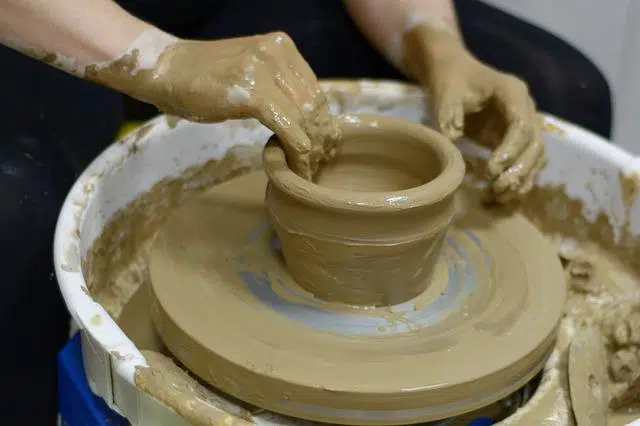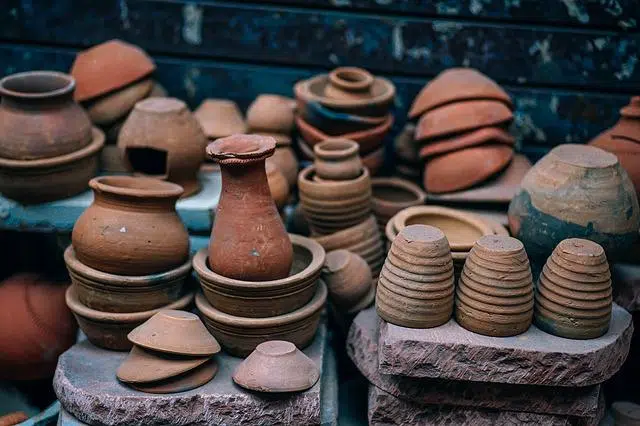
Pottery is the art that is based on the creation of baked clay vessels.
In order to determine the etymological origin of the word that concerns us now, it is necessary that we go back in time. And it emanates from Arabic, and more specifically from the words al-fahhar that can be translated as "ceramics."
Pottery is the name of the art that consists of making baked clay vessels . The stores where the vessels are sold and the workshop in which they are manufactured are also given this name.
Generally, the concept of pottery is used to refer to those pieces made without glaze or with varnish applied in a single firing. For this reason, the potter differs from the ceramist , since he adds glazes and uses various techniques in his pieces, with more than one firing.
History of pottery
Historians affirm that pottery was born about 12,000 years ago in Japan , with the development of Jomon ceramics . The oldest pottery in Latin America on record is composed of the Kotosh-Hauyrajirca objects, which were found in Peru and date back to 1,850 BC.
So important, not only for mere decorative pleasure but also for its usefulness in carrying out various tasks of daily life, has been pottery throughout history that today, in addition to the objects mentioned, a multitude of ceramic elements have been found. this type belonging to very ancient times.

It is estimated that pottery was born about 12,000 years ago.
Pieces in museums
Thus, for example, today we have the privilege of being able to admire everything from Egyptian pieces dating back to the year 3,700 BC to others belonging to the cultures that populated the Iberian Peninsula during the Bronze Age , including Greek, Iberian and Roman ceramics.
Precisely these and many others have become the best works of art and jewelry that are preserved in museums around the world. Specifically, some of the most significant are found in the National Archaeological Museum of Athens, the National Museum of Tokyo, the National Museum of Ancient Art of Portugal or the National Archaeological Museum of Spain which is located in Madrid.
All of this without forgetting that, for example, there are other cultural centers of this type that specialize in pottery. This would be the case of the Agost Pottery Museum, in the Valencian community, which is located in an old clay factory from the 19th century and which allows you to gain in-depth knowledge of the characteristics of this art in that area.
Creating pottery objects
The process of making ceramic pieces begins with kneading the clay , so that the different particles and moisture are distributed homogeneously and to avoid the formation of air bubbles.
The next step consists of manual molding or with the help of different tools. In this part of the process, water is added so that the clay maintains its plasticity and cracks do not appear.
The piece is then left in the open air to dry, in a phase known as the leather state . When the piece is completely dry, it acquires greater hardness and a lighter color. The potter can then sand the piece to make it neater.
Finally, the piece of pottery is taken to the kiln , where it gains greater resistance and loses its chemical moisture.
